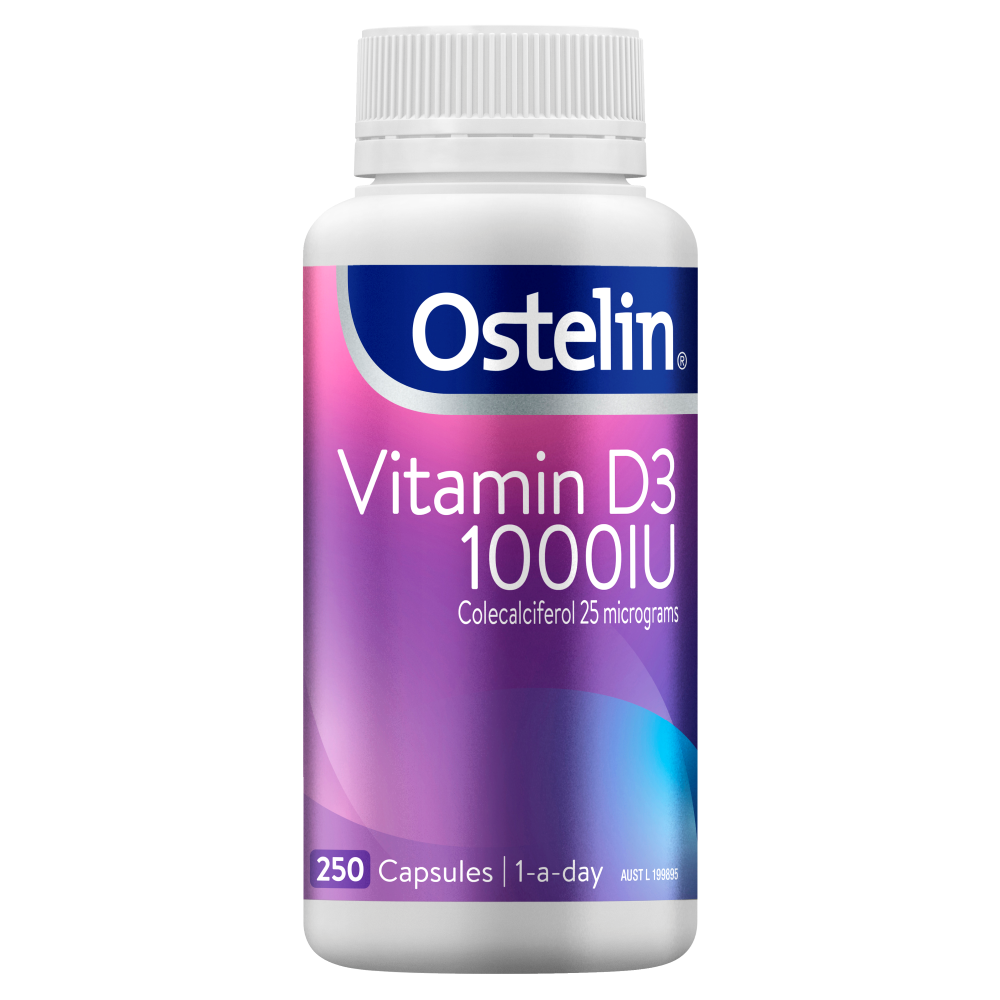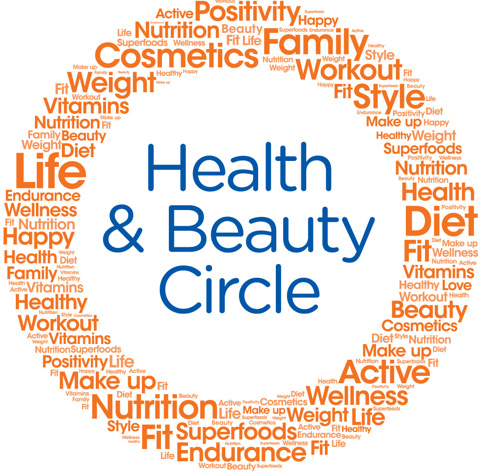
The steps are simpler than you may think.
We’ve all got a pretty solid handle on vitamins A, B, and C by now – as soon as they broke into the skin care business, we all memorised their resumes real fast.
And yet another important vitamin (spoiler alert: it’s vitamin D, one that the body relies on for calcium absorption and thus for healthy bones and a healthy immune system function) still seems somewhat hard to wrap your head around, and even trickier to understand how to get adequate levels from your diet alone. We looked at the clinical research available to find out how vitamin D works and how it contributes to your health.
Well, we have two dynamite pieces of news. Firstly? We’ve found out exactly why vitamin D is a must-have for health. And secondly, we’ve found out how to top up your personal Vitamin D level.
Let’s get learning, shall we?
What is vitamin D and why do our bodies need it?
Vitamin D is an essential vitamin. Your body needs it every day to assist in absorbing the calcium necessary to build strong and healthy bones i, ii. It is also important for healthy immune system function.
Strong bones and healthy immune system function are both so important. We all want to feel as strong and healthy as possible, and vitamin D is a big part of that.
That’s exactly why we need to know if we’re running low. Low vitamin D levels happen when you don’t have enough vitamin D in your body, and primarily causes issues with your bones and muscles iii, iv. Low vitamin D levels are most commonly diagnosed through vitamin D testing ordered by your General Practitioner or other healthcare professional v.
If you’ve discovered that you have low vitamin D levels, or want to work on maintaining healthy vitamin D levels, here’s how to increase your vitamin D stocks.
What are the best sources of vitamin D?
Balancing your sources of daily vitamin D is vital when you are low in it. Each day, your exposure to sunlight, consumption of vitamin D rich containing foods, and whether or not you take a vitamin D supplement, all contribute to the maintenance of healthy vitamin D levels vi.
Now for the vitamin D-etails…
Vitamin D through sun exposure
Clinical research tells us that when your skin is exposed to the sun, UVB rays cause the body to produce vitamin D3 vii. Accessing safe amounts of sunlight can be beneficial for maintaining healthy vitamin D levels viii, while sun exposure does have some perks, sun safety is of course still advised.
Always be careful when exposing your skin to the sunlight, that you balance your need to remain sun safe by limiting your exposure time and following sun safe skin practices where indicated. When the UV Index is above 3, always use sun protection ix,”.
The advised amount of sun exposure for upping vitamin D levels changes per season, as well. Research suggests that when exposing the skin to sunlight, it is important to consider the time of year and the sun saturation of the place you live, as well as sun safety practices x,”
During the summertime in Victoria, for example, when the sun is at its peak intensity - exposing the face, arms, and hands to sunlight for a few minutes most days, outside of the peak sun exposure window of 10am to 2pm - is adequate. During the wintertime, you may need more time in the sun, particularly if you live in southern states like Victoria xi. In these locations, time spent in the sun will need to increase to 2 to 3 hours a week in winter xii. It is important to note that people with naturally dark skin tones may need 3-6 times this exposure in both the summertime, and in the winter xiii.”
If you are unable to access sunlight during the day due to your lifestyle, occupation or sun protection needs, consider alternate sources xiv.
Nutritional vitamin D
Yep, diet can help to uplift your vitamin D levels, too! Found in eggs, fish and dairy foods, dietary vitamin D can contribute 5-10 per cent of your vitamin D intake for the day xv. If you have a diet low in these foods, or that restricts the consumption of animal sourced ingredients, you may wish to consider alternate sources xvi. Ah yes, that brings us to…
Vitamin D supplementation
When you’re low in vitamin D, your doctor or healthcare practitioner is likely to recommend a lifestyle changes or vitamin D supplement, depending on your Vitamin D level. Depending on your requirements, this may include taking a daily or weekly dose. When alternate sources including sunlight and nutritional intake do not supply adequate vitamin D, supplementation is indicated xvii.
So how does supplementation work when it comes to vitamin D? Taking a vitamin D supplement will assist you in maintaining healthy vitamin D levels, particularly if you have any of the risk factors for developing low vitamin D levels, like you work indoors or don’t get much exposure to the sun nor from the diet. For more information on the full set of risk factors, jump online and take the Ostelin D-Test (ostelin.com.au).
Vitamin D supplements work by providing your body with a form of vitamin D known as colecalciferol, the same form of the vitamin that is produced when the skin is exposed to sunlight xviii.
The benefits of taking vitamin D are to assist with healthy calcium absorption and thus bone health, when risk factors such as reduced sun exposure are present, and to assist in maintaining a healthy immune system function xix.
Ostelin Vitamin D3 1000IU Capsules make the supplementation process simple, offering easy-to swallow capsules that deliver a ‘one a day’ dose of vitamin D. They’re made in Australia, too – bonus!
The secret to success is working the supplementation step into one of your existing daily rituals. Of course, to receive the benefits of vitamin D supplementation, remembering to take your supplement daily is vital. When adding a vitamin D supplement into your daily routine, consider first the habits you have every day that you take for granted, like brushing your teeth or taking a shower. By popping your bottle of vitamin D next to your toothbrush or in the bathroom, you are more likely to remember to take your vitamin and make it part of your daily routine xx.
If taking a daily vitamin is not your thing, talk to your doctor or pharmacist to see if a weekly vitamin D supplement is more suited to your needs. Weekly supplements only need to be taken once every seven days, so can be a great alternative for those with a busy lifestyle.
Brought to you by Ostelin.

Always read the label and follow the directions for use.
References:
i Sciencing. Why are Bones important to the Body? 2018. https://sciencing.com/why-are-bones-important-tothe-body-4140797.html Accessed: May2023.
ii NHMRC. Nutrient Reference Values for Australia and New Zealand. Vitamin D. 2017. Nutrient Reference Values for Australia and New Zealand Including Recommended Dietary Intakes (nhmrc.gov.au) Accessed: May 2023.
iii Health Direct. Vitamin D deficiency. 2022.. Vitamin D deficiency | healthdirect Accessed: May 2023
iv Cleveland Clinic. Vitamin D deficiency. 2022. Vitamin D Deficiency: Causes, Symptoms & Treatment (clevelandclinic.org) Accessed: May 2023.
v Cleveland Clinic. Vitamin D deficiency. 2022. Vitamin D Deficiency: Causes, Symptoms & Treatment (clevelandclinic.org) Accessed: May 2023.
vi Cleveland Clinic. Vitamin D deficiency. 2022. Vitamin D Deficiency: Causes, Symptoms & Treatment (clevelandclinic.org) Accessed: May 2023.
vii Cancer Council. Vitamin D. How much sun do we need? 2023. Vitamin D | Cancer Council Accessed: May2023.
viii NHMRC. Nutrient Reference Values for Australia and New Zealand. Vitamin D. 2017. Nutrient Reference Values for Australia and New Zealand Including Recommended Dietary Intakes (nhmrc.gov.au) Accessed: May 2023.
ix Victoria Department of Health. Vitamin D and sun exposure. 2016. Vitamin D and sun exposure (health.vic.gov.au) Accessed: May 2023.
x Cancer Council. Vitamin D. How much sun do we need? 2023. Vitamin D | Cancer Council Accessed: May2023
xi Victoria Department of Health. Vitamin D and sun exposure. 2016. Vitamin D and sun exposure (health.vic.gov.au) Accessed: May 2023.
xii NHMRC. Nutrient Reference Values for Australia and New Zealand. Vitamin D. 2017. Nutrient Reference Values for Australia and New Zealand Including Recommended Dietary Intakes (nhmrc.gov.au) Accessed: May 2023.
xiii Victoria Department of Health. Vitamin D and sun exposure. 2016. Vitamin D and sun exposure (health.vic.gov.au) Accessed: May 2023.
xiv NHMRC. Nutrient Reference Values for Australia and New Zealand. Vitamin D. 2017. Nutrient Reference Values for Australia and New Zealand Including Recommended Dietary Intakes (nhmrc.gov.au) Accessed: May 2023.
xv Nowson CA et al. Vitamin D and health in adults in Australia and New Zealand: a position statement. Med J Aust 2012; 196 (11): 686–87.
xvi NHMRC. Nutrient Reference Values for Australia and New Zealand. Vitamin D. 2017. Nutrient Reference Values for Australia and New Zealand Including Recommended Dietary Intakes (nhmrc.gov.au) Accessed: May 2023.
xvii NHMRC. Nutrient Reference Values for Australia and New Zealand. Vitamin D. 2017. Nutrient Reference Values for Australia and New Zealand Including Recommended Dietary Intakes (nhmrc.gov.au) Accessed: May 2023.
xviii NHMRC. Nutrient Reference Values for Australia and New Zealand. Vitamin D. 2017. Nutrient Reference Values for Australia and New Zealand Including Recommended Dietary Intakes (nhmrc.gov.au) Accessed: May 2023.
xix Bishop et al. Vitamin D and Immune Regulation: Antibacterial, Antiviral, Anti-inflammatory. JBMR Plus. Sep 15;5(1):e10405. Vitamin D and Immune Regulation: Antibacterial, Antiviral, Anti‐Inflammatory - L Bishop - 2021 - JBMR Plus - Wiley Online Library Accessed: May 2023.
xx Health Direct. Creating healthy habits. 2021. Creating healthy habits | healthdirect Accessed: May 2023.
MAT-AU-2302165



